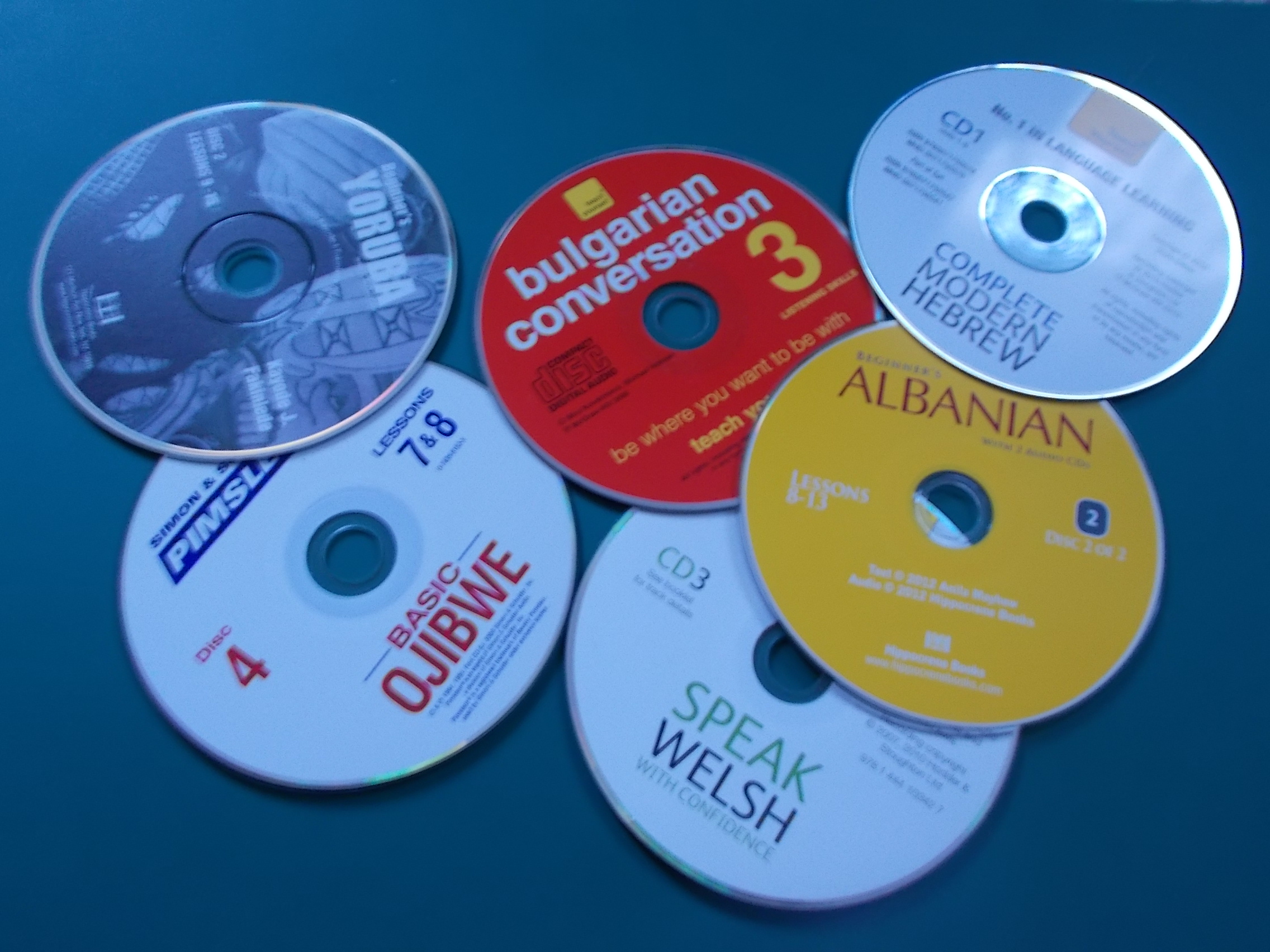
Today’s blog post is about learning methods, more precisely about how to learn vocabulary without ‘learning’ or studying it actively or consciously.
This can be done with audio courses, in particular with bilingual ones, and the method belongs to an intuitive and immersive approach to language learning. So how can you do this?
Basically, what you do in order to learn vocabulary and phrases without studying them consciously is to listen to audio tapes repeatedly, quite literally *for hours* while doing something else (housework, cooking, waiting at the doctor’s or while commuting, etc.) and to repeat these sessions at regular intervals. Spaced repetition is absolutely essential for this approach: in the beginning when starting a new language, it is best to listen to the tapes every 2 or 3 days (or every day, if you are so inclined), and when you become more familiar with the language and start to pick up vocabulary and expressions quite naturally, you can increase the gap between sessions, but once a week or at least once every two weeks is best, in my experience (at least, so it works for me… 🙂 ), to reactivate the vocabulary and phrases you have learned.
Depending on how familiar with your target language you already are, the dialogues you listen to might sound quite like incomprehensible gibberish in the first few sessions, especially when it is a language that is unrelated to any you already know. But don’t worry – this is quite normal! Just keep listening to the tapes, and from about the 4th or 5th session onwards, you will notice that things are starting to fall into place, and that you have subconsciously learned (!) some of the vocabulary and phrases and that you can discern individual words and that is no longer just ‘gibberish’ 🙂 .
While this method or approach to language learning won’t (!) eliminate the need to also study grammar with a textbook to learn how the language ‘works’, this approach is suitable to get a basic intuitive grasp of your target language and to achieve basic fluency (A1 or even A2 according to the European framework for language proficiency, but here it depends very much on the course you are using and how much basic vocabulary and phrases are treated!). A nice side effect is also that this approach will boost your listening comprehension.
This method also works because all the vocabulary and all the phrases are absorbed in context, and in the context where they naturally occur and in which you will need these words. As I have written in a prior blog post, learning vocabulary in isolation almost never leads to good results and it is always best to learn the words as collocations (=words that appear frequently together as a set phrase, e.g. ‘to go by bus’, ‘to read a book’) and as expressions.
What audio tapes or courses are suitable for this method? Well, basically you can use any audio tape you might have, but bilingual tapes are best, since they will tell you the meanings of individual words or phrases and explain basic grammatical structures. If these special bilingual courses or tapes are not available for your target language, e.g. because it is a language that is only rarely studied and there is not much material on the market, you can also use a monolingual tape with dialogs (those that accompany textbooks), but then it is absolutely essential that you make yourself familiar with the content of the individual dialogs before listening to them – you will want to understand what the speakers are on about to be able to subconsciously absorb the vocabulary and phrases through repeated listening! Basically, this approach to language learning is like listening to your favourite songs or music on tapes – after a while you will know the lyrics and could sing along. Just here, you will know the words and expressions that make up dialogs. 🙂
